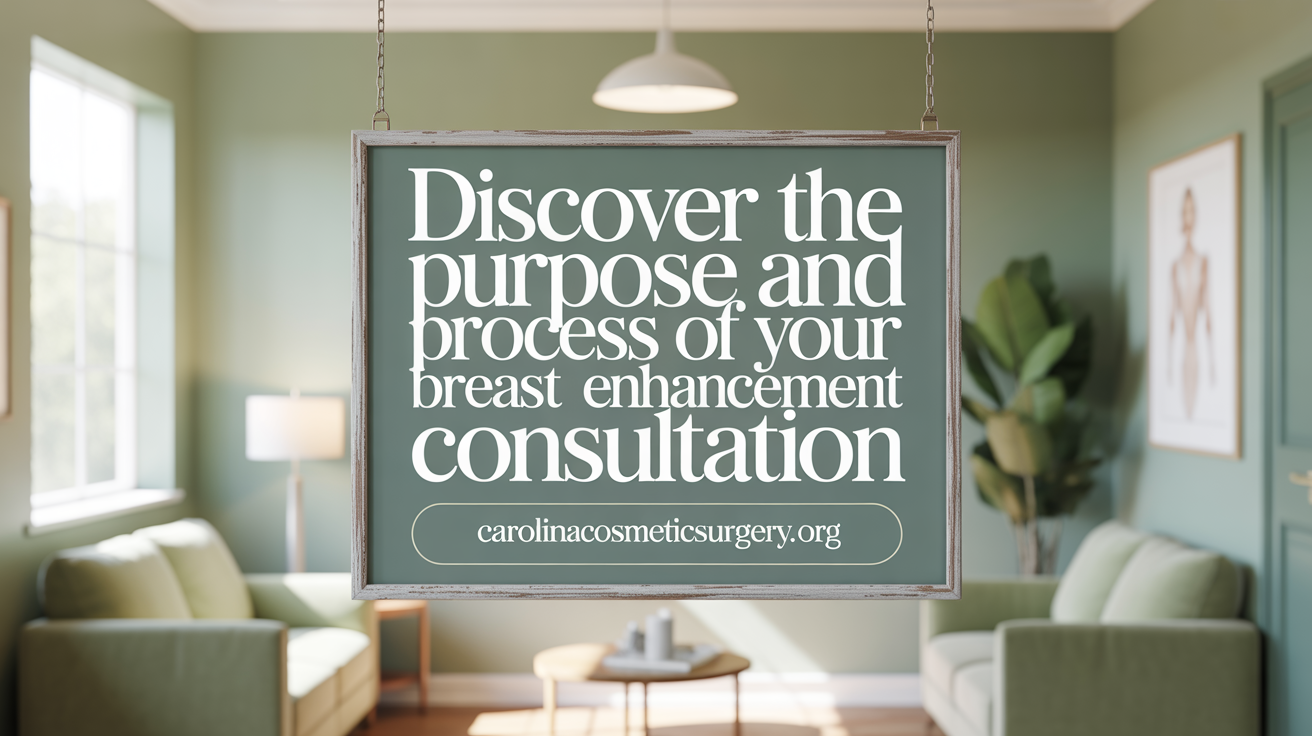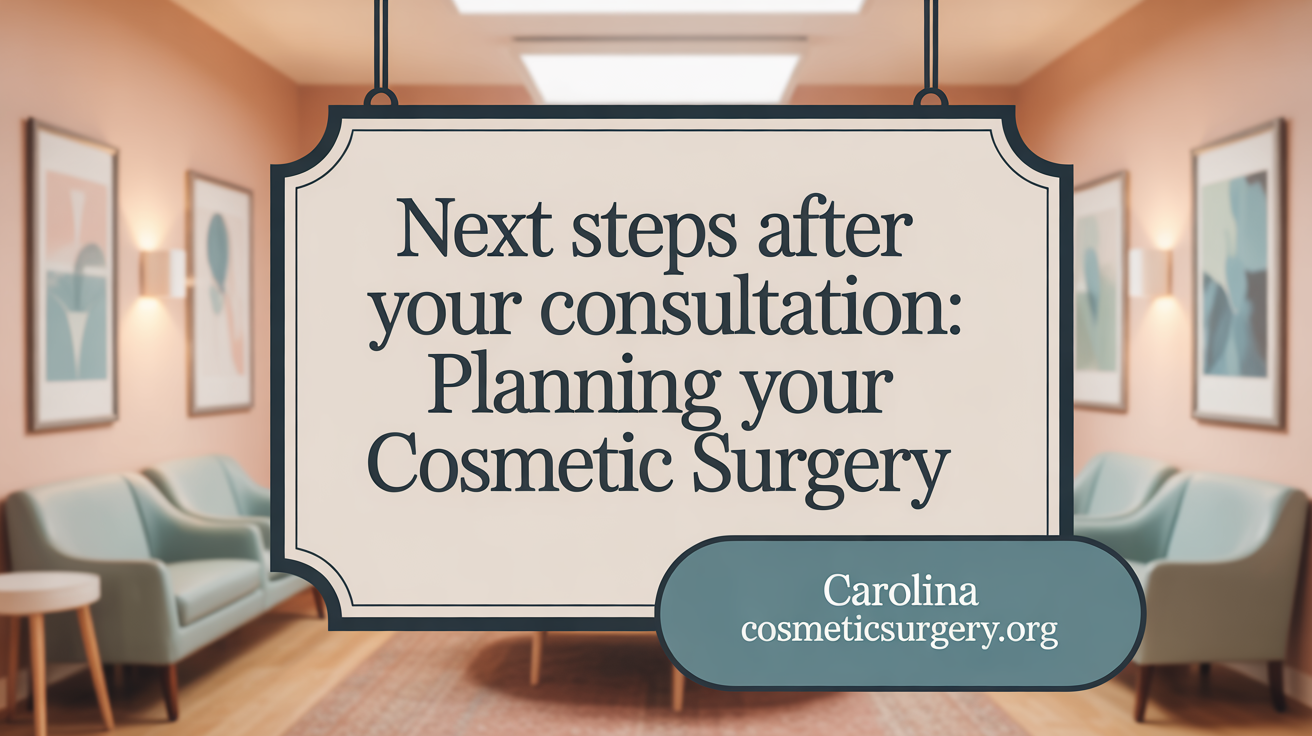Understanding the Importance of the Consultation
A breast augmentation consultation marks the crucial first step in your journey toward achieving the aesthetic goals you've envisioned. This comprehensive meeting with a board-certified plastic surgeon provides an opportunity to explore implant options, surgical techniques, potential risks, recovery expectations, and more. Knowing what to expect before, during, and after the consultation empowers you to make well-informed decisions and prepares you for a positive surgical experience.
Purpose and Process of the Breast Augmentation Consultation

What is the purpose and overview of a breast augmentation consultation?
A breast augmentation consultation is a vital initial step where patients learn about the procedure and discuss their aesthetic goals with a qualified surgeon. This session typically lasts about an hour and provides a comprehensive overview of options, including implant types, incision sites, placement techniques, and expected results.
During the consultation, the surgeon reviews the patient’s medical history, including past surgeries, health conditions, medications, allergies, and lifestyle factors such as smoking or alcohol use. This assessment helps determine their suitability for surgery and identify any potential risks.
A physical breast examination is performed to measure breast size, skin quality, tissue density, and symmetry. The surgeon also takes detailed photographs and may use 3-D imaging tools to create visual representations of achievable outcomes.
Patients are encouraged to bring images or examples of their desired look. This helps the surgeon understand their expectations and allows for realistic goal setting.
Risks such as infection, bleeding, capsular contracture, implant rupture, asymmetry, and very rarely, breast implant-associated anaplastic large cell lymphoma (ALCL), are openly discussed. Patients also learn about the typical recovery process, including activity restrictions like avoiding heavy lifting and bouncing activities for about six weeks.
The consultation also covers administrative details like costs, surgical scheduling, anesthesia plans, and post-op care instructions. Patients often ask questions about implant feel, longevity, post-surgical appearance, and how to prepare for recovery.
An important goal of this consultation is to align patient expectations with what can realistically be achieved surgically. By understanding all aspects, patients can make informed decisions about their treatment.
In summary, this meeting serves to evaluate medical suitability, educate the patient about the procedure, establish clear goals, and build a foundation for a safe and satisfactory surgical experience.
Preparing for Your Consultation: Documentation and Personal Information
Before attending a breast augmentation consultation, it’s important to gather all relevant medical documentation. This includes your complete medical history, such as past surgeries, ongoing medical conditions, allergies, and current medications, including supplements. Having this information ready helps your surgeon assess your suitability for the procedure and plan accordingly.
You should also be prepared to discuss your reasons for considering breast augmentation, your aesthetic goals, and expectations. Using mirror tests, reference photos, or images from online galleries can help you communicate what you’re hoping to achieve. Being clear about your desired size, shape, and overall look will assist your surgeon in recommending suitable implant options.
Researching and choosing a qualified, board-certified plastic surgeon is a crucial step. Verify their credentials, experience, and reviews. During the consultation, prepare a list of questions related to the procedure—such as implant types, incision sites, recovery process, potential risks, and long-term outcomes—to ensure you leave well-informed.
It’s also recommended to bring any relevant medical documentation, like recent mammogram or biopsy results, especially if you have a history of breast issues. Discussing your family history of breast cancer is also advisable, as it may influence your treatment plan.
Finally, organize your questions and thoughts beforehand to make the most of your appointment. Being well-prepared will facilitate a smooth consultation process, help you make confident decisions, and achieve satisfactory results from your breast augmentation experience.
Research search query: how to prepare for breast augmentation consultation
Typical Steps and What Happens During the Consultation

Initial patient arrival and consultation setting
Patients typically arrive at the clinic after an initial email or phone inquiry. They are welcomed into the consultation space, where they meet with a patient care coordinator and the surgeon. During this initial phase, patients are usually asked to complete a comprehensive medical history questionnaire. This helps the medical team understand the patient’s overall health, previous surgeries, allergies, medications, and lifestyle factors.
Medical questionnaire completion
Patients fill out a detailed medical questionnaire before the physical examination. This document covers past medical conditions, family history of breast cancer, mammogram history, smoking status, and other relevant health information. Accurate completion of this form is essential for assessing candidacy and identifying any potential risks.
Physical examination and breast measurements
The surgeon performs a thorough physical exam, which includes measuring the breasts, assessing skin quality, checking nipple and areola positioning, and evaluating breast tissue and chest wall anatomy. This helps determine the appropriate implant size, shape, and placement. Photos may be taken to document baseline conditions and discuss possible results.
Exploring implant options and visualization tools
The consultation involves reviewing different options for implants, such as saline, silicone, gummy bear, or fat grafting. To help visualize potential outcomes, the surgeon may use 3D imaging systems like Vectra or show before-and-after photos of previous patients. Patients are encouraged to bring reference photos of their desired look and try on implant sizers in their clothing, often a non-padded sports bra, to get a feel for different sizes.
Surgeon’s assessment and personalized recommendations
Based on the physical findings and the patient’s goals, the surgeon provides tailored recommendations. This includes discussing incision sites—such as inframammary or periareolar—implant placement options like submuscular or subglandular, and implant style and profile. The surgeon considers factors like breast shape, volume, and skin elasticity to formulate a surgical plan that aligns with the patient's expectations.
Discussion of risks, recovery, and postoperative guidelines
The surgeon reviews potential risks such as infection, bleeding, capsular contracture, rupture, asymmetry, and rare conditions like ALCL. Recovery guidelines are explained, including restrictions on heavy lifting, exercise, and wearing specific bras for about six weeks post-surgery. Patients learn about pain management strategies and how to prepare for the postoperative period. The consultation concludes with an opportunity for the patient to ask questions about safety, results, costs, and scheduling the procedure.
| Step | Description | Purpose | Additional Details |
|---|---|---|---|
| Arrival & Inquiry | Meet with care staff, fill out questionnaires | Gather health info | Enables personalized assessment |
| Medical History Review | Discuss medical, family, and lifestyle history | Assess health & risks | Includes medications, smoking, allergies |
| Physical Examination | Measure breasts, evaluate tissue | Determine implant size & position | Photos and documentation may be taken |
| Visual & Simulation Tools | Use 3D imaging or sizers | Visualize potential outcomes | Helps in decision-making |
| Personalized Planning | Recommendations based on exam & goals | Tailored surgical plan | Covers incision, implant type, placement |
| Risks & Recovery Discussion | Cover risks, recovery tips | Educate & set expectations | Includes restrictions and pain management |
Discussing Options, Goals, and Managing Expectations

What options, goals, and expectations are typically discussed between the patient and surgeon during the consultation?
During the consultation, both the patient and surgeon focus on aligning expectations with realistic outcomes. Patients are encouraged to communicate their desired breast size and shape, which can be aided by using images, such as reference photos or mirror tests, to express their ideal look.
The surgeon discusses different implant options, including the type—saline or silicone—and options regarding shape, like round or teardrop, as well as various profiles such as low, moderate, or high, which influence projection and overall appearance.
Incision placement is also reviewed, with common choices including periareolar (around the nipple), inframammary (along the breast fold), or transaxillary (through the armpit). The surgical techniques for implant placement—whether above or below the chest muscle—are explained, along with expected scarring, recovery timelines, and possible risks like capsular contracture or changes in nipple sensation.
Patients are urged to consider their individual anatomy, lifestyle, and future factors like pregnancy or aging that might influence results.
An essential part of the discussion involves setting realistic expectations regarding how the implants will look, how long they will last (typically at least 10 years), and whether additional procedures such as a breast lift might be necessary to achieve optimal aesthetic harmony.
The surgeon also talks about the potential impact of aging, weight changes, and lifestyle habits. Patients are encouraged to ask questions about the procedures, recovery process, and long-term results. This open dialogue ensures informed decision-making and helps build mutual trust.
In summary, the consultation covers a comprehensive review of options, including implant choices and surgical techniques, while clarifying what results can reasonably be expected based on the patient's unique anatomy and goals.
Understanding Risks, Benefits, and Surgeon Selection Criteria

What potential risks, benefits, and considerations are addressed during a breast augmentation consultation?
A breast augmentation consultation is a comprehensive discussion where the surgeon reviews both the positive outcomes and potential risks associated with the procedure. Patients learn about common risks such as infection, bleeding, capsular contracture (hardening around the implant), implant rupture or leakage, and the rare development of Breast Implant-Associated Anaplastic Large Cell Lymphoma (BIA-ALCL). Additionally, changes in nipple and breast sensation, which are usually temporary, and the possibility of asymmetry or malposition are explained.
On the benefit side, surgeons highlight enhancements in breast size, shape, and symmetry, which often lead to increased self-confidence and improved body contour. They also discuss how implants can help restore volume after pregnancy, weight loss, or aging.
Other considerations include the longevity of implants, which typically last 10-15 years, and the potential need for future surgeries to replace or revise implants. The impact of implants on breastfeeding is generally minimal, especially with certain incision techniques, but some cases might require additional procedures.
The surgeon emphasizes the importance of ongoing screening for implant integrity and reminds patients about anesthesia risks and the importance of choosing an experienced, skilled surgeon. Overall, patients are encouraged to carefully weigh these risks and benefits, understanding that careful planning and follow-up are essential for good results.
Consultation Outcomes and Next Steps in Your Breast Augmentation Journey
 After your breast augmentation consultation, you will receive a tailored surgical plan that details the best implant types, size, placement, and other technical options specific to your anatomy and goals. The surgeon reviews your medical history and conducts a physical exam, taking measurements and photographs to help determine the most suitable approach. Advanced tools like 3D imaging may be used to help visualize your results, providing a clear picture of what to expect.
After your breast augmentation consultation, you will receive a tailored surgical plan that details the best implant types, size, placement, and other technical options specific to your anatomy and goals. The surgeon reviews your medical history and conducts a physical exam, taking measurements and photographs to help determine the most suitable approach. Advanced tools like 3D imaging may be used to help visualize your results, providing a clear picture of what to expect.
Patients should prepare to ask questions about their chosen options, recovery process, and possible risks to set realistic expectations. During this visit, the surgeon will also discuss the costs involved and preoperative instructions, such as required tests or medication adjustments. Once the plan is outlined, the next step typically involves scheduling the surgery and preparing for the procedure, including understanding the necessary precautions and postoperative care.
Follow-up communication is essential for addressing any additional questions and supporting the recovery process. Surgeon inspiration and support may include phone calls, emails, or additional appointments to monitor your progress. It is common for patients to have multiple consultations—around two or three—especially when exploring different options or when seeking second opinions. This thorough approach ensures you are comfortable and confident in your decision.
Regarding finances, many clinics offer financing options like CareCredit® or other plans to help manage the costs. Carefully reviewing all aspects of the procedure, recovery, and financing during the consultation helps you make an informed, confident choice as you plan the next phase of your breast augmentation journey.
Making the Most of Your Breast Augmentation Consultation
Your breast augmentation consultation is an essential step toward achieving your desired results safely and confidently. By preparing thoroughly, engaging in open discussions about goals, risks, and options, and carefully evaluating your surgeon, you set a foundation for a positive surgical experience. Remember, taking the time to understand the process, asking the right questions, and considering multiple opinions empowers you to make informed decisions that align with your personal aspirations. Approach the consultation as a collaborative partnership with your surgeon that guides you toward the best aesthetic outcome and overall satisfaction.
References
- Here's What To Expect During A Breast Augmentation Consultation
- What can you do to prepare for a breast augmentation consultation?
- What to Expect During a Breast Enlargement Consultation
- What to Expect at a Breast Augmentation Consultation
- What Happens at a Breast Augmentation Consultation? | Dr. Rice
- What to Ask at a Breast Augmentation Consultation | Dr. Fischer
- What Happens During a Breast Augmentation Consult?
- What to Expect During Your Breast Augmentation Consultation
- FAQ: Breast Augmentation | University of Michigan Health
